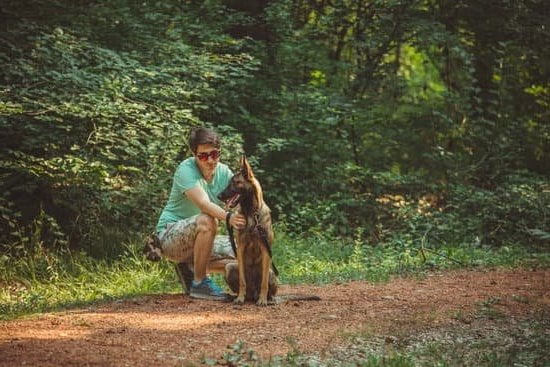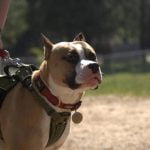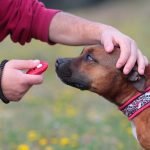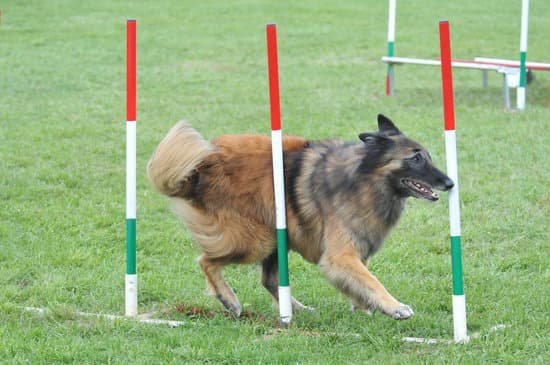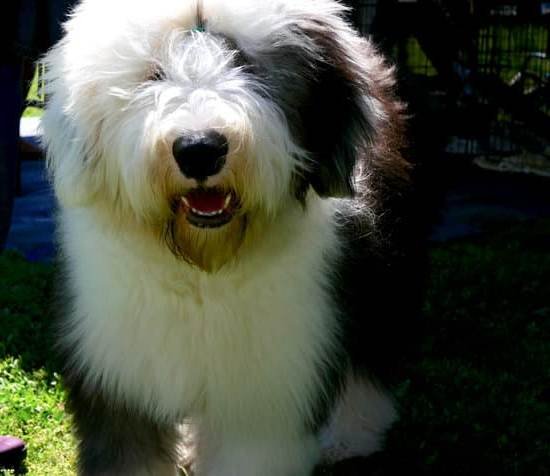Dog aggression towards other dogs can be a challenging behavior to address and train. In this section, we will explore the definition of dog aggression towards other dogs, common triggers for this behavior, and the importance of addressing and training it effectively.
Dog aggression towards other dogs refers to any aggressive or hostile behavior displayed by a dog towards its fellow canines. This can manifest in various ways, such as growling, barking, lunging, or even physical attacks. Understanding this behavior is crucial for preventing potentially dangerous situations and ensuring the well-being of all involved.
There are several common triggers that may elicit dog aggression towards other dogs. These can include fear, protectiveness over resources or territory, dominance struggles, lack of socialization, traumatic experiences, or even learned behavior from previous encounters. It is important to identify these triggers in order to tailor the training approach accordingly.
Addressing and training dog aggression towards other dogs is vital not only for the safety of all dogs involved but also for promoting healthy social interactions and preventing potential injuries. With consistent training techniques and patience, it is possible to modify this behavior successfully and create a harmonious environment for both your dog and others in their presence.
Types of Dog Aggression towards Other Dogs
Overview of Different Types of Aggression
When it comes to dog aggression towards other dogs, it is important to understand that there are various types of aggression. Each type has its own unique triggers and behaviors exhibited by the aggressive dog. By identifying the specific type of aggression, you can tailor your training approach to effectively address and manage the behavior.
One common type of aggression is fear-based aggression. Dogs exhibiting this behavior are often afraid of other dogs and may react aggressively as a way to protect themselves. Protective aggression occurs when a dog feels the need to defend its territory or its owner from perceived threats. Territorial aggression, on the other hand, is specifically directed towards intruders in the dog’s designated space. Dominance aggression stems from a desire for social dominance and control over other dogs.
Identifying Behaviors Exhibited in Each Type
Understanding the behaviors associated with each type of aggression is crucial for determining the appropriate training techniques. Fear-based aggression may manifest through cowering or hiding, barking or growling, lunging, or even biting when feeling threatened. Dogs displaying protective aggression may bark excessively at perceived threats, lunge aggressively towards other dogs approaching their owner or territory, and exhibit a dominant posture.
Territorial aggression can be recognized by excessive barking at intruders near their territory boundaries, charging at approaching dogs within their space, and displaying possessiveness over objects within their domain. Finally, dominance aggression is characterized by challenging postures such as standing tall with a stiff body and direct eye contact with other dogs or humans.
The Importance of Identifying Specific Aggression for Effective Training
By correctly identifying the specific type of dog aggression towards other dogs, you can implement targeted training methods that are most likely to produce positive results. It allows you to address the underlying emotions driving the aggressive behavior and work towards modifying those emotions. By understanding the triggers that lead to aggression, you can provide appropriate counterconditioning and desensitization exercises to help your dog overcome their negative responses.
Remember that every dog is unique, and their aggression may not fit perfectly into one category. It is essential to work with a professional dog trainer or behaviorist who can accurately assess your dog’s behavior and provide personalized guidance for effective training. With the right approach, patience, consistency, and dedication, you can help your dog manage their aggression towards other dogs and improve their overall behavior.
Assessing the Severity of Dog Aggression
Understanding the severity of dog aggression towards other dogs is crucial in developing an effective training plan. It allows owners to gauge the level of risk and determine appropriate measures to address the aggressive behavior. Assessing the severity involves evaluating the intensity, frequency, and context of the aggression. By doing so, owners can better understand their dog’s behavior and make informed decisions about training techniques.
Different Levels of Aggression
Dog aggression can range from mild to severe, with varying degrees of intensity. Mild aggression may manifest as growling or snapping when confronted by another dog, while moderate aggression could involve lunging or biting attempts. In severe cases, dogs may exhibit relentless attacks and cause serious injuries.
Behaviors Exhibited at Each Level
Mildly aggressive dogs will typically display warning signs such as raised hackles, a stiff body posture, or bared teeth without actual physical contact. Moderately aggressive dogs may actively initiate confrontations by charging at other dogs or engaging in low-level fights. Severely aggressive dogs often exhibit no hesitation or inhibition in attacking other dogs aggressively and persistently.
Evaluating Severity
To assess the severity of dog aggression towards other dogs, it is important to observe past incidents and identify recurring patterns. Keep a record of specific triggers that set off the aggression and note any injuries caused during these encounters. Evaluating the level of danger posed by your dog’s aggression will help guide you in deciding on appropriate training methods.
It is essential to remember that assessing severity does not mean labeling your dog as “bad” or untrainable. Instead, it serves as a starting point for understanding what kind of training approach is needed to address the issue effectively. Remember that every dog is unique, and each case of aggression should be evaluated individually to tailor a personalized training program.
Building a Strong Foundation
Basic obedience training is a crucial component in managing and addressing dog aggression towards other dogs. By establishing a strong foundation of obedience commands, you can set your dog up for success in their interactions with other dogs. When a dog is well-trained and responsive to commands, they are less likely to exhibit aggression or engage in negative behaviors during encounters with other dogs.
The essential commands that should be taught as part of basic obedience training include sit, stay, come, and leave it. These commands provide you with control over your dog and allow you to redirect their attention or behavior when needed. For example, teaching your dog to “sit” can be useful in preventing confrontations when encountering another dog on a walk. Instructing your dog to “stay” can help create space between them and another dog, reducing the likelihood of aggressive behavior.
A well-trained dog is also more likely to listen and follow instructions during desensitization exercises or controlled interactions with other dogs. This obedience foundation provides you with the tools necessary to manage any potential aggression while working on behavioral modification techniques.
| Command | Description |
|---|---|
| Sit | A command that instructs the dog to sit down on command. |
| Stay | A command that encourages the dog to remain in place until given further instruction. |
| Come | A recall command that calls the dog back to its owner. |
| Leave It | A command that tells the dog not to touch or pay attention to a specific object or stimulus. |
Desensitization and Counterconditioning Techniques
Desensitization and counterconditioning are highly effective techniques for training dog aggression towards other dogs. These methods aim to change the dog’s emotional response to other dogs by gradually exposing them to controlled and positive experiences. By doing so, the goal is to replace their aggressive or fearful reactions with more relaxed and tolerant responses.
To begin desensitization and counterconditioning, it is crucial to first identify the specific triggers that elicit aggression in your dog. This could be certain breeds, sizes, or behaviors displayed by other dogs. Once you have identified these triggers, you can create a hierarchy of exposure starting from the least triggering factor to the most triggering one.
The process involves slowly introducing your aggressive dog to the trigger in a controlled environment. Start at a distance where your dog does not display any aggressive behavior and reward them with treats, praise, and rewards for calm and non-aggressive behavior. Gradually decrease the distance between your dog and the trigger over time as they become more comfortable and relaxed.
Below is an example of a desensitization exercise for a dog who exhibits aggression towards unfamiliar dogs while on walks:
Example Desensitization Exercise: Walking Past Other Dogs
- Begin by walking your aggressive dog on a leash at a safe distance from other dogs.
- As soon as your dog notices another dog but does not react aggressively, immediately reward them with treats or praise.
- Over multiple sessions, gradually decrease the distance between your dog and other dogs while maintaining their calmness.
- If your dog starts showing signs of aggression (growling, lunging), increase the distance again until they are calm.
- Repeat this exercise regularly while monitoring your progress until your dog can walk past other dogs without displaying aggression.
Desensitization and counterconditioning require patience, consistency, and positive reinforcement to ensure success. It is important to remember that each aggressive dog is unique, and progress may vary. Seeking guidance from a professional dog trainer or behaviorist can provide additional support and expertise in implementing these techniques effectively.
| Desensitization Steps | Behavioral Response |
|---|---|
| Walking at a safe distance from other dogs | Calm, non-aggressive behavior rewarded with treats/praise |
| Gradually decreasing the distance between the dog and other dogs | Monitoring for signs of aggression and increasing distance if necessary |
| Regularly repeating the exercise while progressing towards closer proximity to other dogs | Achieving calmness and non-aggressive behavior during encounters with other dogs |
Gradual Exposure to Other Dogs
When it comes to training dog aggression towards other dogs, a crucial step is gradually exposing the aggressive dog to other dogs in a controlled environment. This gradual exposure allows the dog to become more comfortable and confident around other dogs, reducing their aggressive behavior. Here are some guidelines for safely introducing the aggressive dog to other dogs:
- Choose Neutral Territory: It’s important to select a neutral location for the initial meetings between the aggressive dog and other dogs. This can be a park or an open space where none of the dogs have established territorial claims. By avoiding areas that may trigger territorial behavior, you increase the chances of a successful interaction.
- Use Proper Equipment: Prior to introducing the dogs, ensure that each one is properly restrained using a secure leash and harness or collar. This will allow you to have control over both dogs during the interaction and prevent any potential incidents.
- Start at a Distance: Begin by keeping a safe distance between the two dogs. This prevents them from feeling threatened and allows them to observe each other without direct contact. Gradually decrease this distance as both dogs demonstrate calm behavior.
- Monitor Body Language: Pay close attention to the body language of both dogs during the interaction. Signs of anxiety or aggression, such as raised hackles, growling, snarling, or intense staring, indicate that they may not be ready for closer proximity. If either dog shows signs of discomfort, increase the distance again until they are more relaxed.
- Controlled Introductions: Once both dogs show signs of relaxation, you can begin allowing controlled interactions between them. Keep the introductions brief at first and closely monitor their behavior, intervening if necessary to prevent any negative interactions.
- Positive Reinforcement: As with any training session, positive reinforcement is key during these interactions. Reward both dogs with treats and praise when they exhibit calm and non-aggressive behavior towards each other. This helps to reinforce positive associations and encourages them to continue behaving appropriately.
Remember, the process of gradual exposure to other dogs requires patience, consistency, and careful observation. It’s essential to tailor the pace of the introductions to suit each individual dog’s needs. With time and dedicated training, you can help your aggressive dog develop positive associations with other dogs and reduce their aggression towards them.
Positive Reinforcement Techniques for Behavior Modification
Positive reinforcement techniques are crucial for modifying behavior in dogs with aggression towards other dogs. These techniques focus on rewarding and reinforcing desired behaviors, ultimately helping the dog associate positive experiences with other dogs. By using positive reinforcement, we can effectively train dogs to replace aggressive reactions with more appropriate and calm responses.
One of the most effective tools for positive reinforcement is treats. When a dog displays a behavior that is desirable or shows improvement in their aggression towards other dogs, they should be immediately rewarded with a treat. This encourages them to repeat the behavior in the future. It’s important to use high-value treats that your dog finds particularly enticing, as this will make the reward more motivating.
In addition to treats, praise and rewards such as petting and verbal encouragement also play an essential role in positive reinforcement training. Dogs respond well to positive feedback and it helps strengthen the bond between you and your pet.
Verbal cues like “good job” or “well done” should be used in combination with physical affection like gentle petting or belly rubs. The timing of the praise or reward is crucial – it must be delivered right after the desired behavior is displayed so that the dog can clearly make the connection between their actions and the positive outcome.
It’s important to note that consistency is key when using positive reinforcement techniques for behavior modification in aggressive dogs. Consistently rewarding desired behaviors while ignoring or redirecting undesirable ones will help the dog understand what is expected of them. Through patience and persistence, along with positive reinforcements, aggressive behavior towards other dogs can gradually be diminished, allowing for more harmonious interactions in the future.
Seeking Professional Help
When dealing with dog aggression towards other dogs, it is important to recognize that some cases require the expertise of a professional dog trainer or behaviorist. While there are many training techniques and strategies that can be implemented by dog owners themselves, certain situations may call for additional guidance and support.
This section will discuss scenarios in which seeking professional help is necessary, explain the benefits of hiring a professional, and provide tips on finding a qualified individual to assist with training aggressive behavior.
One clear indication that professional help is needed is when the aggression is severe or uncontrollable. If your dog’s aggression poses a serious risk to other dogs or humans, it is crucial to seek assistance from an experienced trainer or behaviorist. These professionals have the knowledge and expertise to handle complex cases of aggression and can provide you with the tools and techniques necessary for managing your dog’s behavior safely.
Another situation in which professional help may be warranted is if you have already tried various training methods without success. A skilled dog trainer or behaviorist can assess your dog’s behavior, identify any underlying issues contributing to the aggression, and develop an individualized training plan tailored specifically to your dog’s needs. They can also offer valuable insights and advice on how to modify your own behaviors as an owner to promote positive change in your dog’s behavior.
It is important to note that not all trainers or behaviorists are created equal. When searching for a professional to assist with training your aggressive dog, consider their qualifications and experience. Look for certifications from reputable organizations such as the Association of Professional Dog Trainers (APDT) or the International Association of Animal Behavior Consultants (IAABC). Also, ask for referrals or recommendations from trusted sources such as veterinarians or fellow dog owners who have successfully dealt with similar issues.
Conclusion
In conclusion, training dog aggression towards other dogs requires patience and consistency. Understanding the different types of aggression and assessing the severity of the behavior is crucial for developing an effective training plan. Building a strong foundation through basic obedience training is essential, as a well-trained dog is less likely to exhibit aggression towards other dogs.
Desensitization and counterconditioning techniques are powerful methods for addressing dog aggression. Gradual exposure to other dogs in controlled environments can help the aggressive dog learn appropriate behavior. Positive reinforcement techniques, such as treats, praise, and rewards, are vital for reinforcing desired behavior throughout the training process.
While many cases of dog aggression can be managed with dedicated training, there are instances where seeking professional help from a dog trainer or behaviorist is necessary. These professionals have the skills and expertise to guide both dogs and owners through the process effectively.
Frequently Asked Questions
How do I stop my dog from being aggressive to other dogs?
To stop your dog from being aggressive towards other dogs, it is important to address the underlying cause of their aggression. One effective approach is to gradually socialize your dog with other dogs in controlled settings. Begin by introducing your dog to calm and well-behaved dogs, ensuring that interactions are positive, supervised, and short in duration.
Use rewards and positive reinforcement to reinforce good behavior during these encounters. It may also be helpful to consult a professional dog trainer or behaviorist who can assess the situation and provide guidance on specific training techniques tailored to your dog’s needs. Consistency, patience, and providing ample structure and boundaries for your dog are crucial in curbing their aggressive tendencies.
Why is my dog so aggressive towards other dogs?
There can be various reasons why a dog may display aggression towards other dogs. Some common causes include fear or anxiety, lack of proper socialization during the early stages of life, possessiveness over resources such as toys or food, territorial instincts, past traumatic experiences, or even medical conditions that may cause discomfort or pain.
Identifying the root cause of your dog’s aggression is essential in determining an appropriate course of action. Seeking assistance from a veterinarian or animal behaviorist can help you understand the underlying factors contributing to your dog’s aggression and create a tailored plan to address it.
Why is my dog aggressive to some dogs and not others?
Dogs can display varying levels of aggression towards different dogs due to factors such as individual personality traits, past experiences with certain breeds or types of dogs, perceived threats or dominance issues within their social hierarchy, fear-based responses specific to particular situations or stimuli, or even differences in size or demeanor between the dogs they encounter. Each interaction between dogs is unique and influenced by a combination of factors that contribute to their behavior at that moment.
It is important not to generalize your dog’s aggression but rather focus on modifying their response through training strategies specifically designed for each circumstance or trigger they exhibit aggression towards. A professional dog trainer can help you analyze these situations and create a training plan that addresses your dog’s specific triggers and reactions.

Welcome to the blog! I am a professional dog trainer and have been working with dogs for many years. In this blog, I will be discussing various topics related to dog training, including tips, tricks, and advice. I hope you find this information helpful and informative. Thanks for reading!

